German Army enlisted field blouses and greatcoats were adorned with shoulder insignia called Schulterklappen (literally translated, “shoulder flaps”). These pieces of insignia are usually referred to in English as shoulder straps, or shoulder boards. I have adopted the collector convention of referring to Schulterklappen as “shoulder straps” to distinguish them from officer “shoulder boards” (Schulterstücke, literally “shoulder pieces”).
During the 1930s, the German Army used several different shoulder strap styles in different colors and styles, finally settling in 1938 on a new pattern with rounded ends, piped around the edges with colored piping that indicated the branch of service to which the wearer belonged. The top of these straps was made from dark green wool. In 1940, these were replaced with straps made of the same field gray wool from which uniforms were made. 1940 was a time of massive mobilization and expansion in the German armed forces. Millions of these field gray branch piped shoulder straps were made. This shoulder strap pattern remained in use until 1945, with some construction variations. The field gray branch piped shoulder strap became the most widely issued German Army shoulder strap of the war.
Let’s take an in-depth look at the construction and materials details of some typical wartime factory made enlisted issue straps. I chose these straps as typical representative examples.
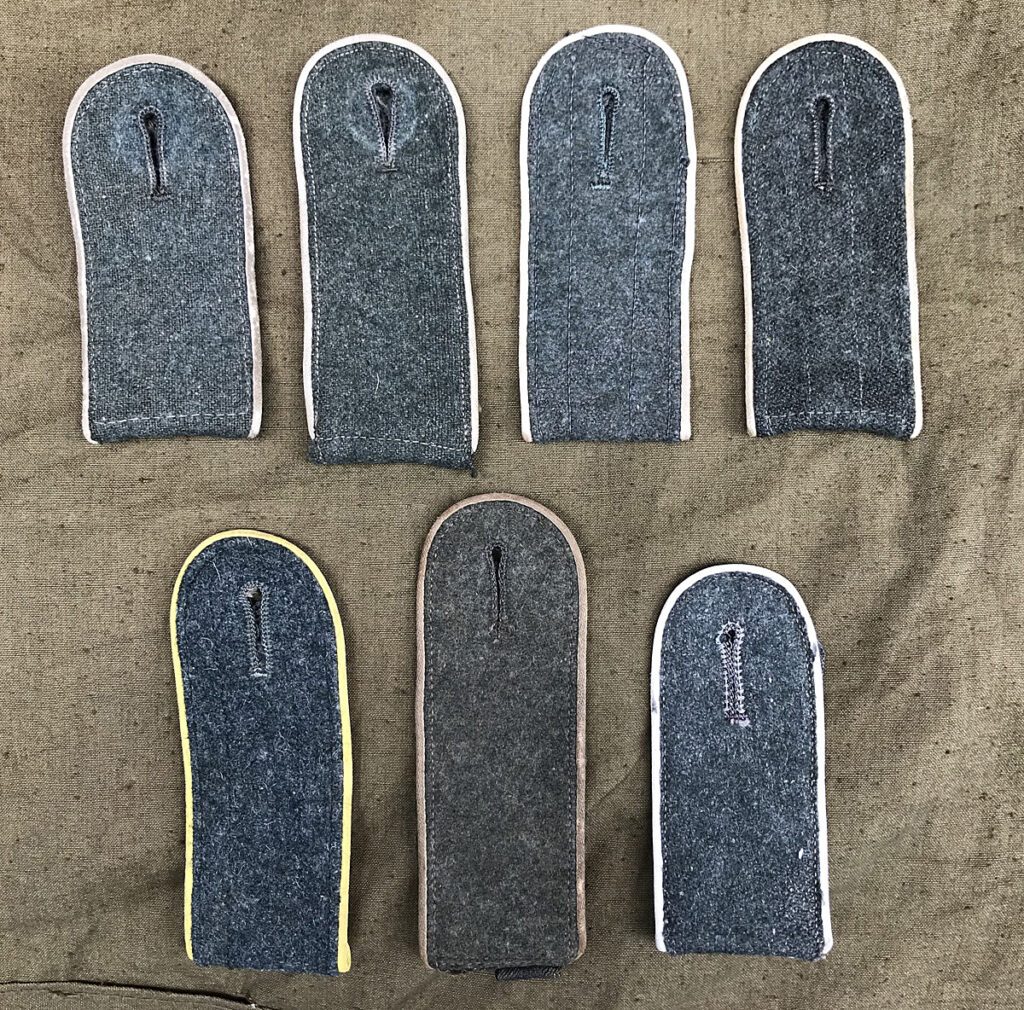
All of the straps in this photo are piped with rayon piping. Wool piping was typically used on 1930s straps. During the war, most factory made enlisted issue straps were piped with rayon. Here are two different variations in the knit of the rayon piping used. The piping on the top has a simple knit. The piping on the bottom is twill, with diagonal bands.
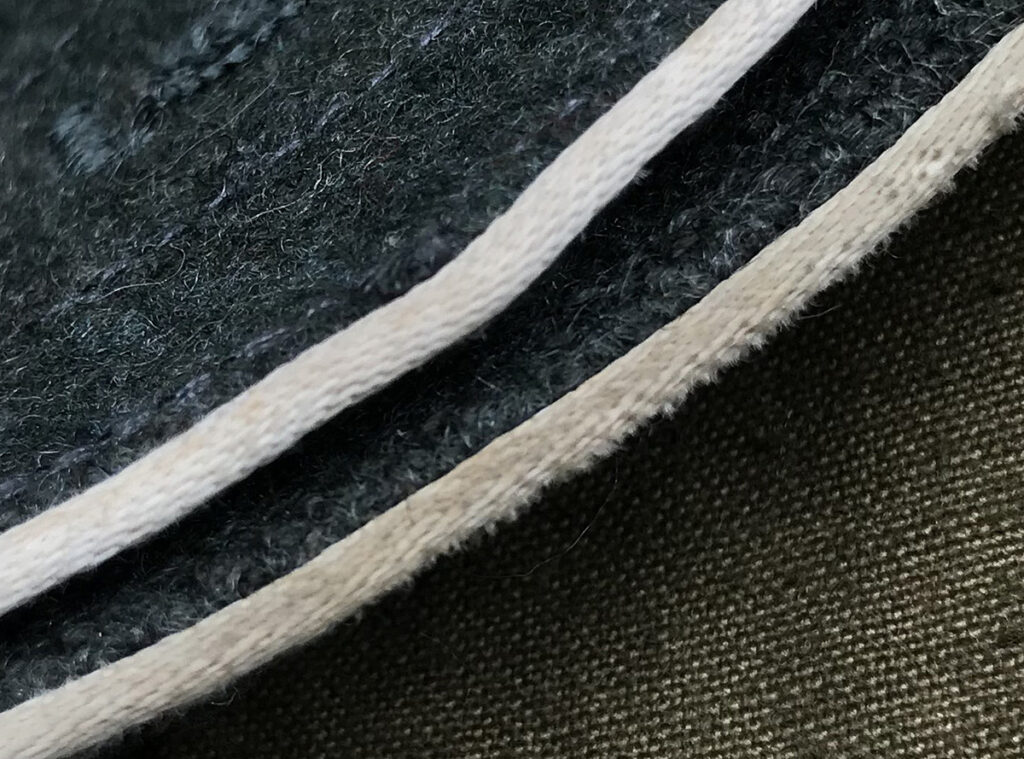
Here are two 1940 pattern straps. These are probably early or mid-war production, and are made from a fairly tightly woven field gray wool, with a small yarn size. The color and type of thread used to make these are the same as the thread used to construct the uniforms- these were made at the same factories, out of the same materials as the uniforms themselves. The buttonholes are the same as those used on the uniforms. You will see that these are two different sizes. I don’t have any documentation at hand to clearly explain why shoulder straps were made in different sizes.
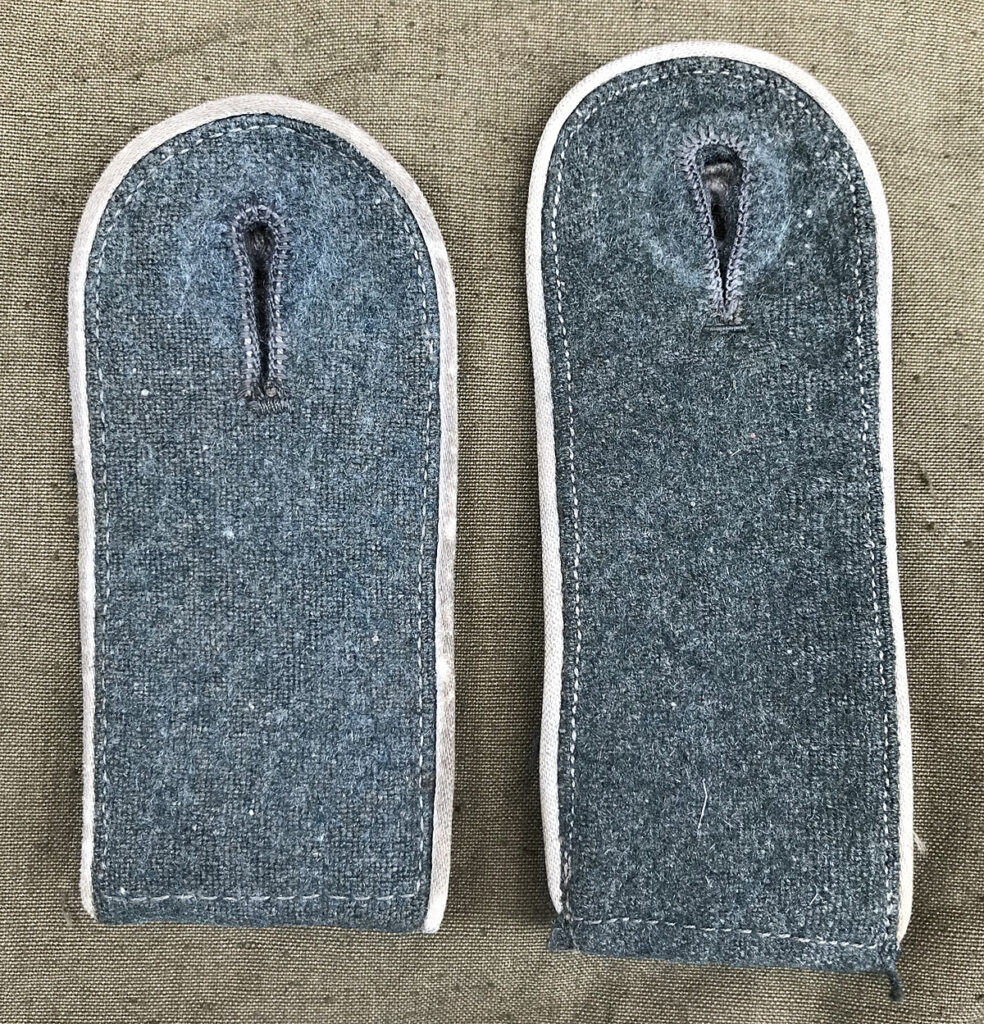
The reinforcement fabric under the tongues of these straps, is a tan twill cotton material, the fabric most commonly used for lining field blouses and overcoats through the midwar period.
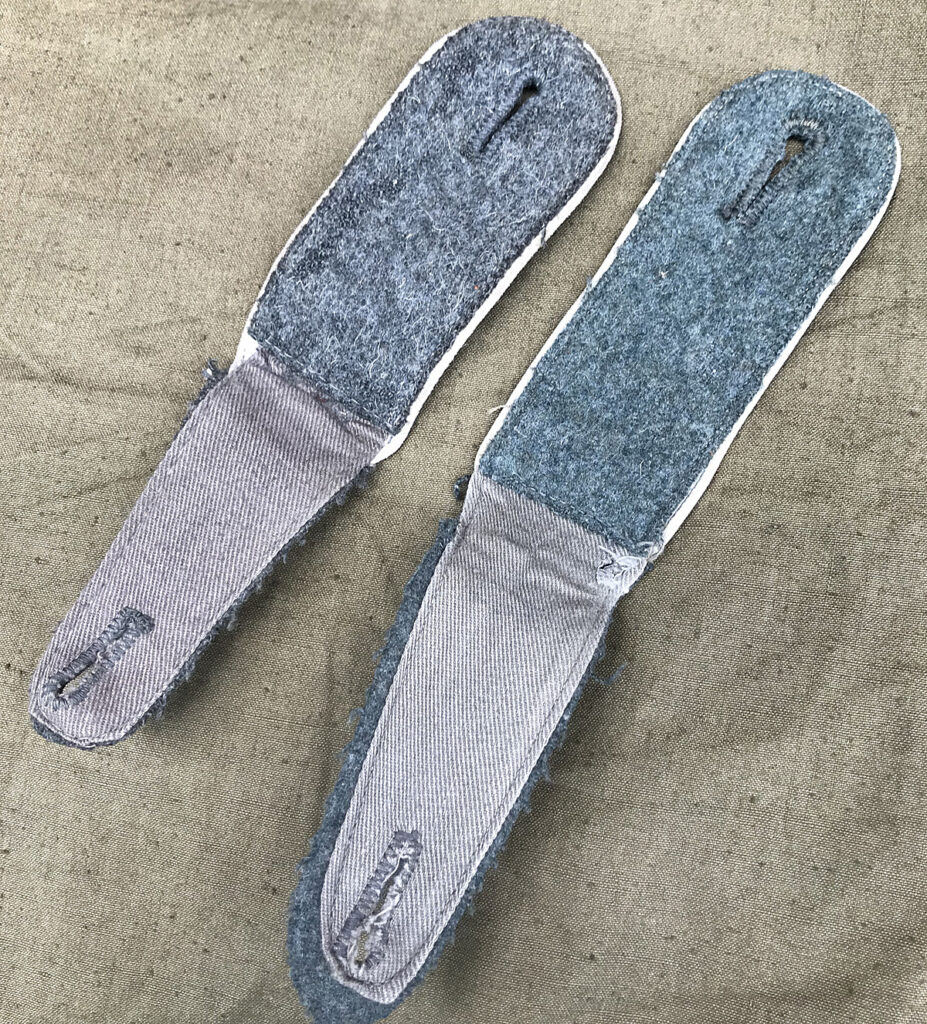
Later in the war, a new construction style appeared. These are referred to by collectors as “M44” shoulder straps although I have not seen any documentation specifying when this style appeared. This was a simplified pattern. The tops were made from a single piece of wool, without the backing piece that had been used previously. Instead of being fully lined, these had a simple reinforcement strip down the middle of the underside. The stitching for this reinforcement strip is visible on the tops of the boards. These shoulder straps are made of later war materials. The strap on the right has nap wear, which reveals the larger yarn size as compared to the earlier straps above. The stitching on the left strap shows that the tension on the sewing machine used to produce it was not properly adjusted- a sign of hasty manufacture.
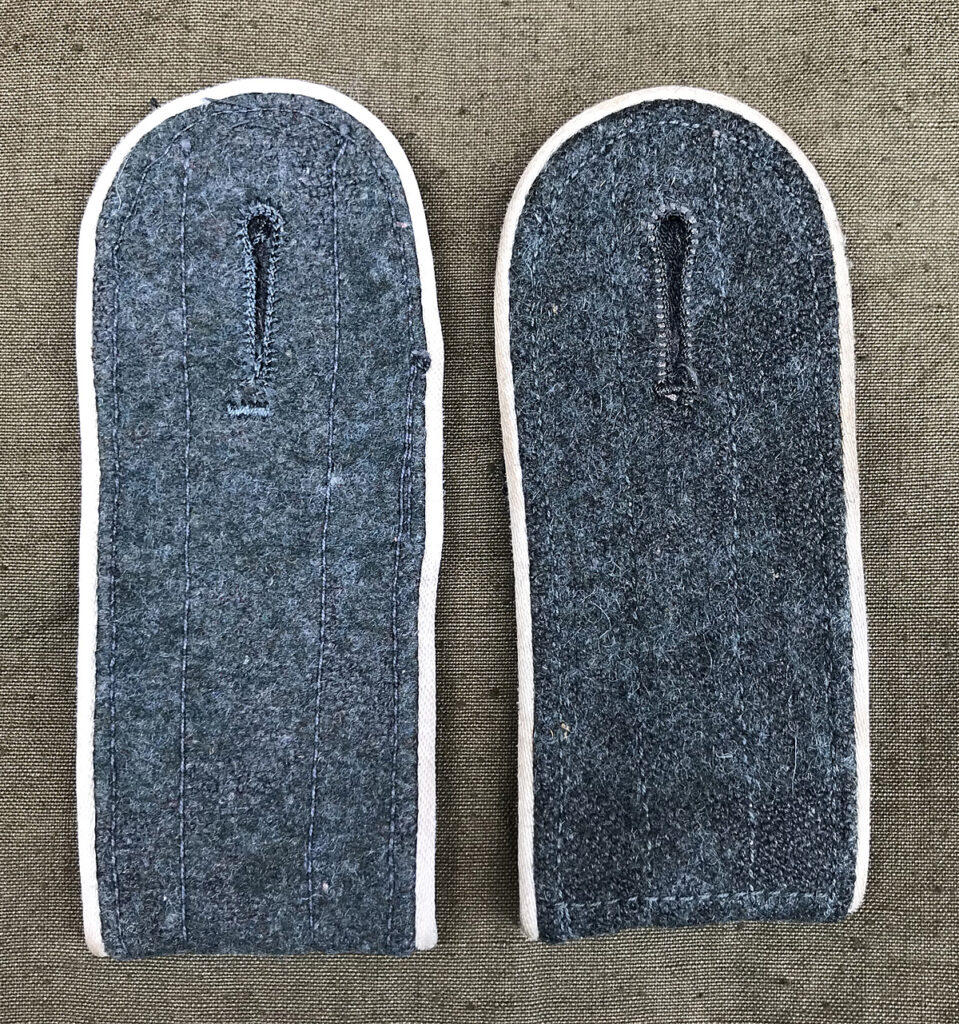
The undersides of these straps show details of the reinforcement. With no backing fabric, all of the piping can be seen, not just the edge. The strap on the right has the most common reinforcement style, a strip of rayon (artificial silk) which was the typical uniform lining fabric in 1944-45. The strap on the left is reinforced with a piece of HBT woven gray tape.
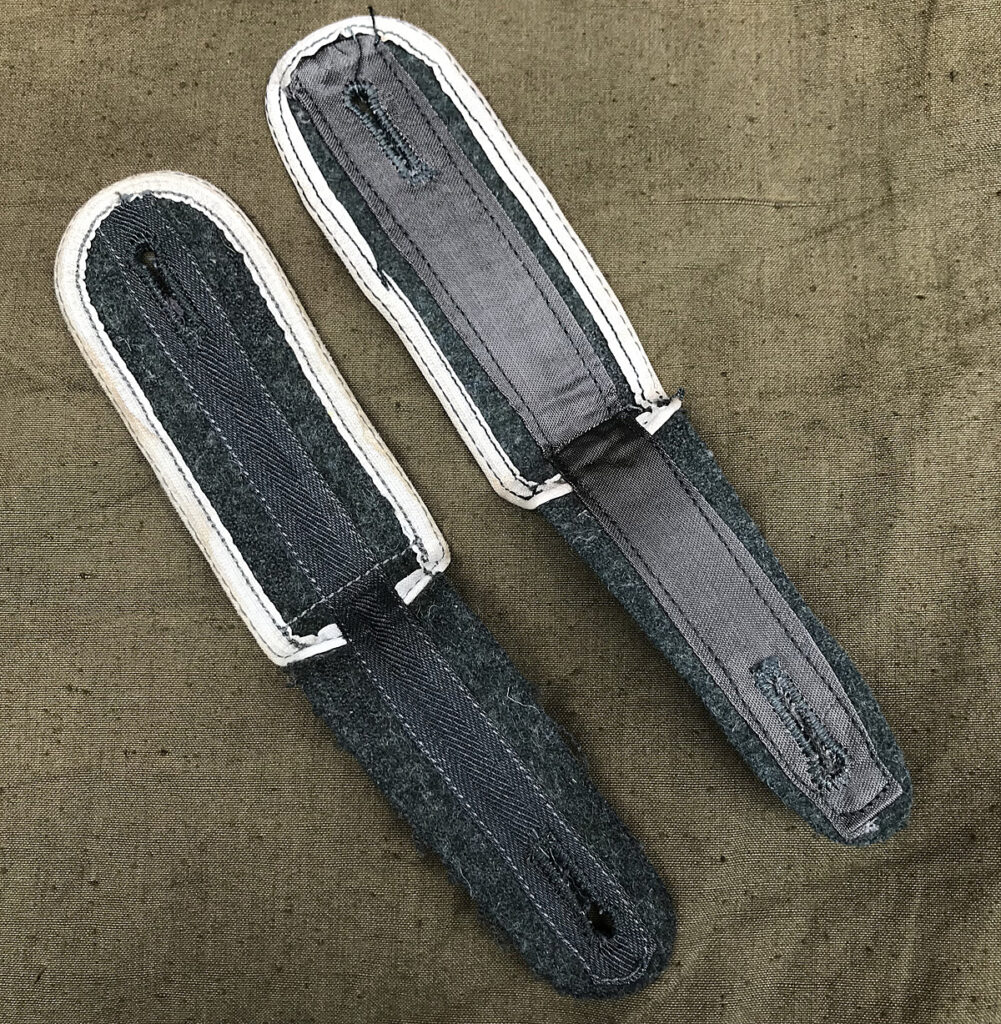
This “M44” strap is piped in lemon yellow, indicating membership in a Nachrichten unit. It’s made out of Italian wool, a coarse, bluish fabric widely used for German uniforms in 1944-45.

The “tongue” of this strap is made of “Feldgrau 44” wool. This was a brownish field gray shade introduced in 1944. The reinforcement is the typical rayon uniform lining fabric. It’s likely that the blue Italian wool and the brownish German wool used to construct these straps, were scraps left over from uniform production.
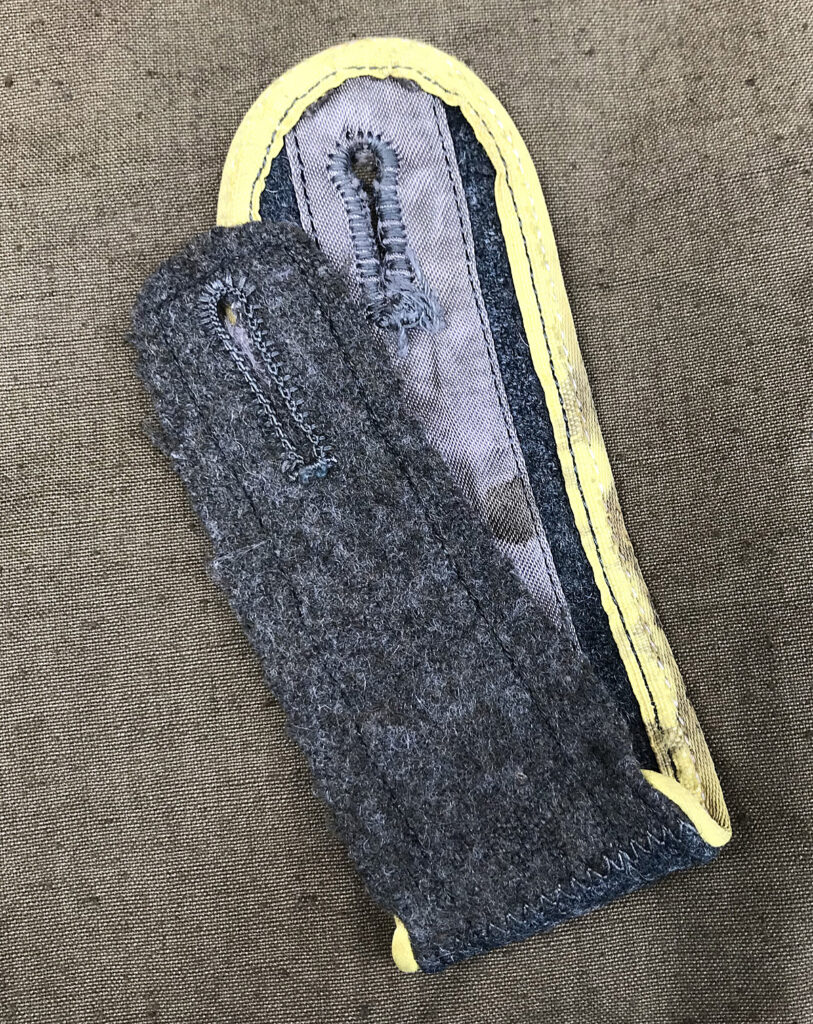
There was also a style of shoulder strap that used simple tape loops rather than the “tongue” for uniform attachment. I have not seen any documentation to indicate when this style appeared, whether it was just a manufacturer variation or perhaps intended for some specific purpose. These are generally regarded as late war pieces, with some speculating that these may have been introduced later than the “M44” style. The example on the left here is made out of a typical late war coarsely woven wool.
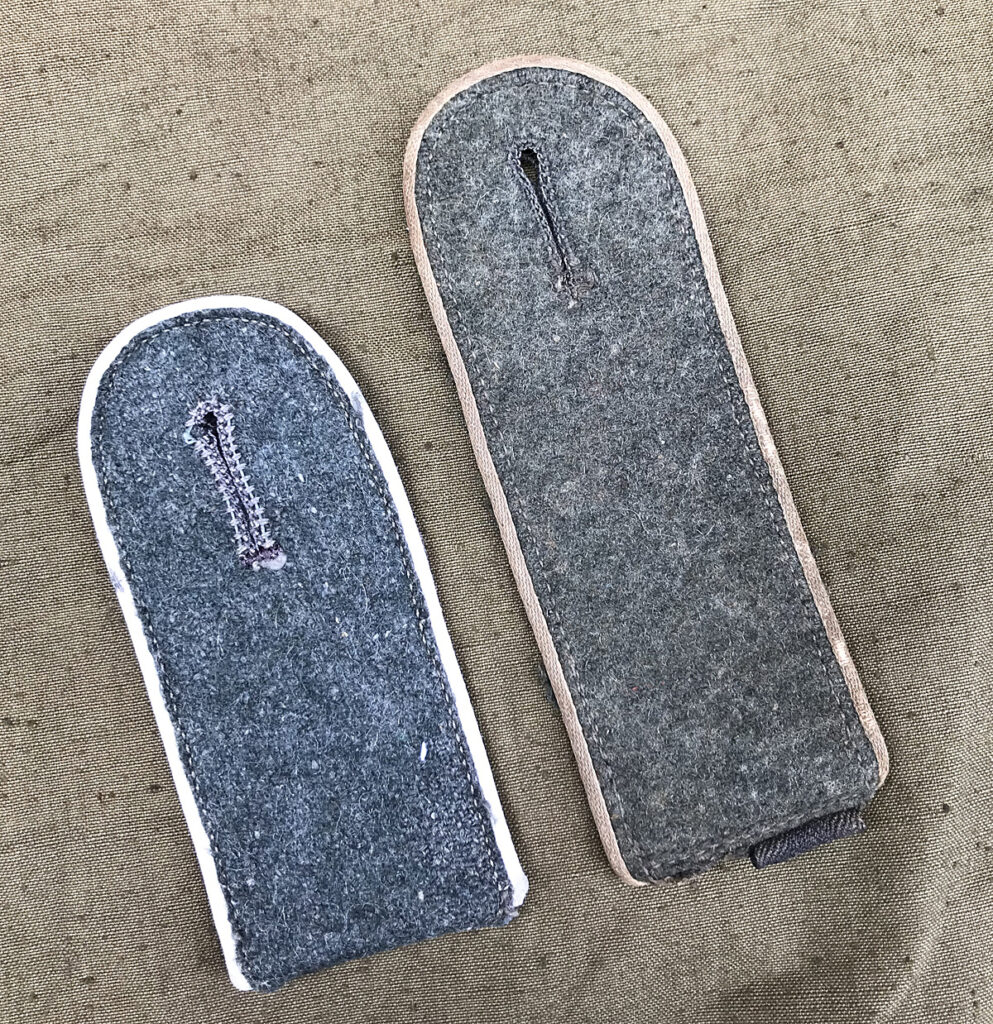
One of these boards is heavily worn, and the HBT woven tape attachment loop is broken. The other shows only light wear and has the attachment loop intact.
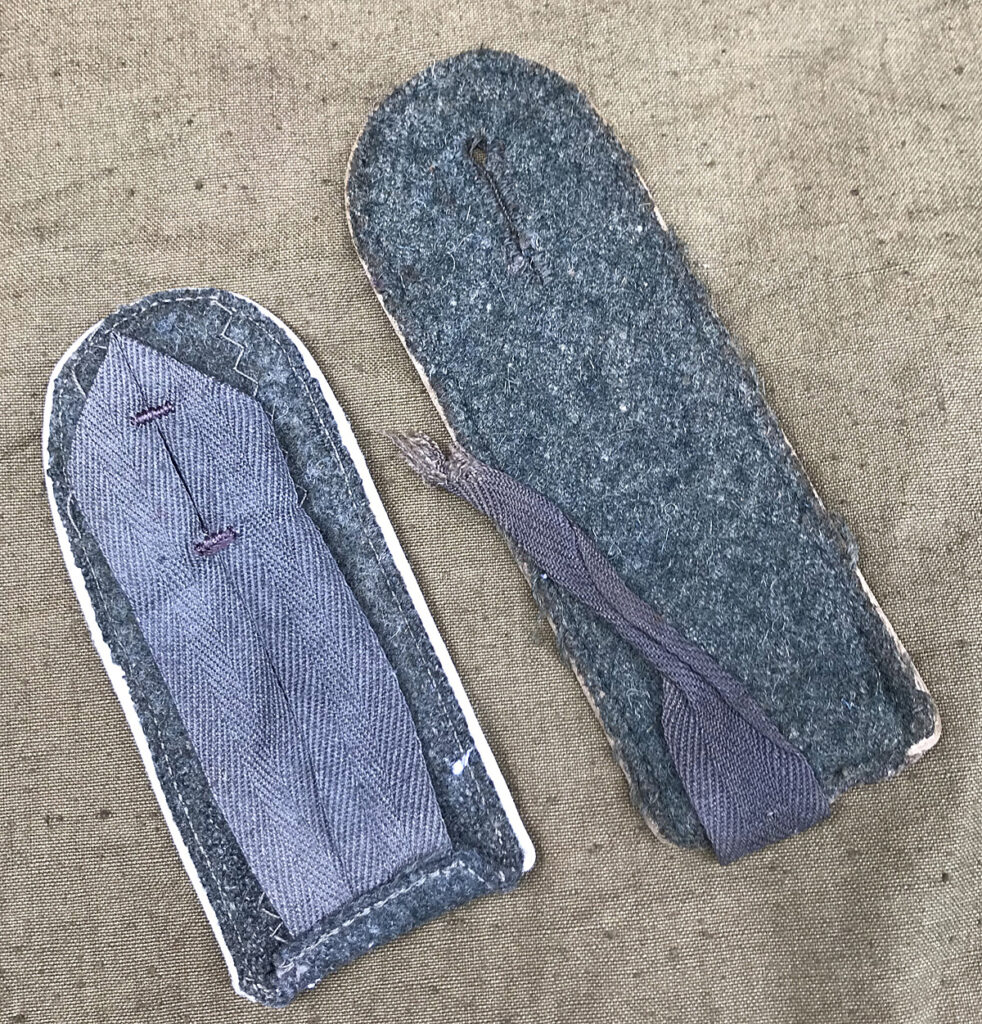
The underside of the left board is made of three pieces of scrap wool that have been pieced together. German uniforms made use of pieced-together scrap fabric for hidden areas of uniforms, even before WWII.
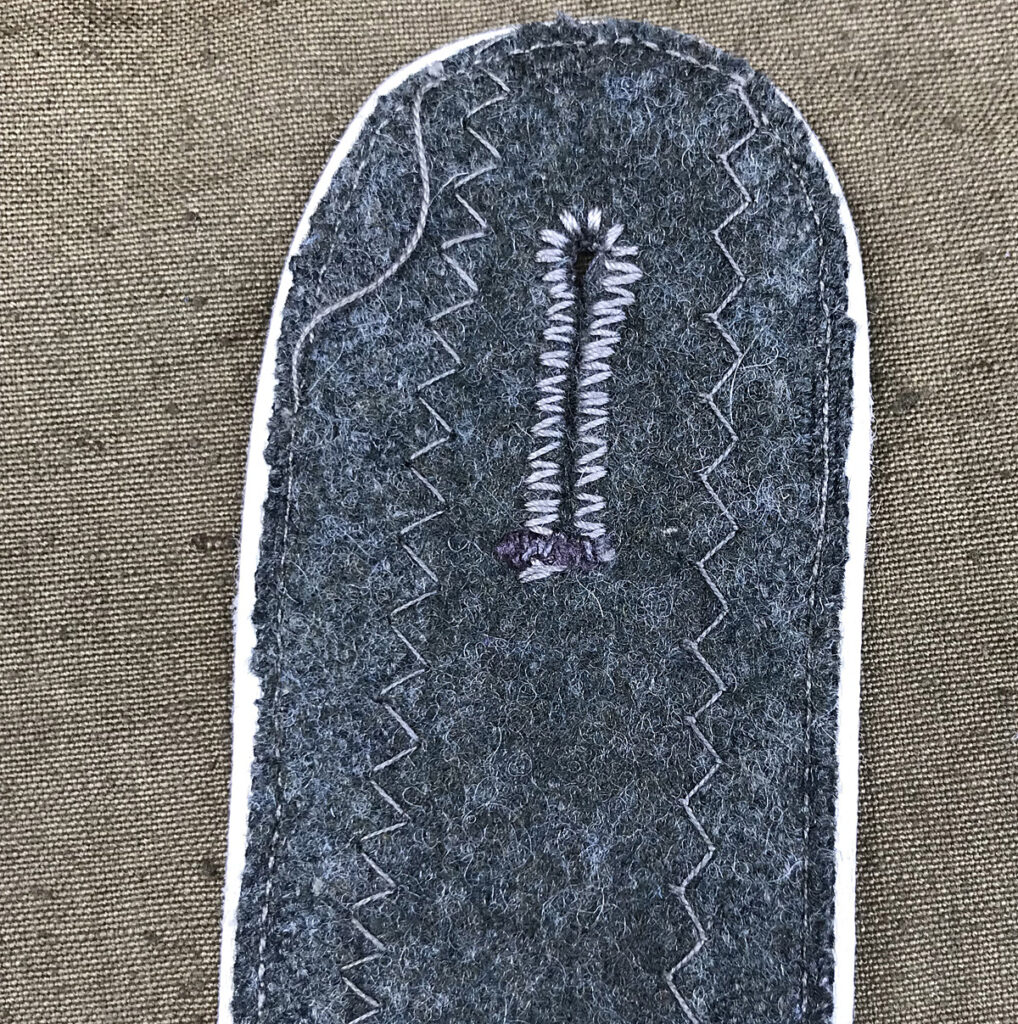
Factory made enlisted issue shoulder straps are interesting and helpful to study, as the materials used and construction details are all the same as what was used on other types of uniforms.